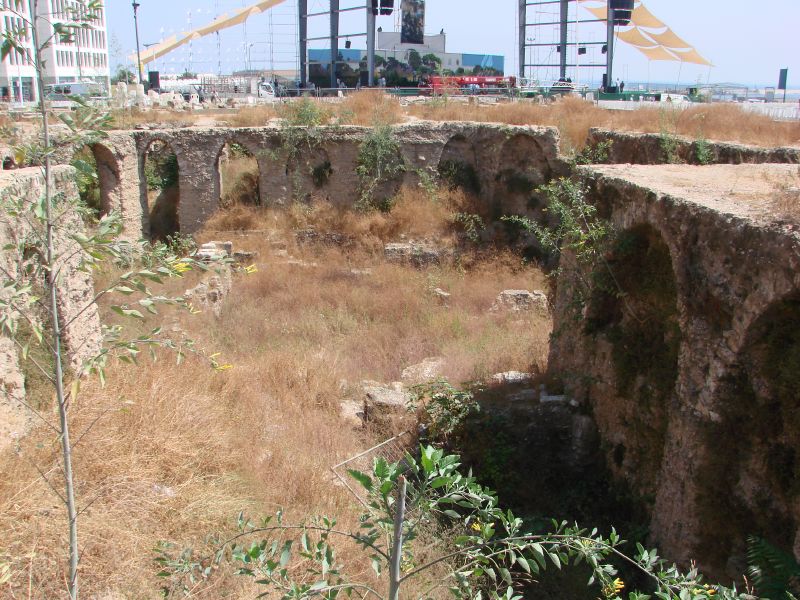|
Directorate General Of Antiquities
The Directorate General of Antiquities (DGA; french: La Direction Générale des Antiquités et des Musées) is a Lebanese government directorate, technical unit of the Ministry of Culture Ministry of Culture may refer to: *Ministry of Tourism, Cultural Affairs, Youth and Sports (Albania) * Ministry of Culture (Algeria) *Ministry of Culture (Argentina) *Minister for the Arts (Australia) *Ministry of Culture (Azerbaijan) * Ministry of ... and is responsible for the protection, promotion and excavation activities in all sites of national heritage in Lebanon. Sarkis Khoury is the Director General with other staff including Joumana Nakhle and Laure Salloum. Organization The Directorate General is split into several different direct directorates including: * Directorate of Archaeological Monuments and Built Heritage is responsible for surveys of sites, landmarks, monuments and buildings of archaeological, scientific, geometrical or artistic value, either above or below ground, standing ... [...More Info...] [...Related Items...] OR: [Wikipedia] [Google] [Baidu] |
Lebanon
Lebanon ( , ar, لُبْنَان, translit=lubnān, ), officially the Republic of Lebanon () or the Lebanese Republic, is a country in Western Asia. It is located between Syria to the north and east and Israel to the south, while Cyprus lies to its west across the Mediterranean Sea; its location at the crossroads of the Mediterranean Basin and the Arabian hinterland has contributed to its rich history and shaped a cultural identity of religious diversity. It is part of the Levant region of the Middle East. Lebanon is home to roughly six million people and covers an area of , making it the second smallest country in continental Asia. The official language of the state is Arabic, while French is also formally recognized; the Lebanese dialect of Arabic is used alongside Modern Standard Arabic throughout the country. The earliest evidence of civilization in Lebanon dates back over 7000 years, predating recorded history. Modern-day Lebanon was home to the Phoenicians, a m ... [...More Info...] [...Related Items...] OR: [Wikipedia] [Google] [Baidu] |
Ministry Of Culture (Lebanon)
The Ministry of Culture (french: Ministère de la Culture; ar, وزارة الثقافة) is a Ministry (government department), government ministry of Lebanon. History The Ministry was formed in 1993, originally as part of the Ministry of Culture and Higher Education from which it became a separate entity in August 2000. A new law was passed in October 2008 regarding a re-structuring for the Ministry. It now has responsibility over matters of cultural heritage, heritage, antiquities, arts, literature, cultural industries and management of cultural and historical property. Tasks and responsibilities The ministry's remit includes various tasks such as planning cultural and sectoral policy, organising and sponsoring literary and artistic affairs, developing the knowledge economy and establishing and co-ordinating expertise. Responsibilities include proposing draft laws and regulations, promoting creativity, research and productivity, promoting innovative products, establishing c ... [...More Info...] [...Related Items...] OR: [Wikipedia] [Google] [Baidu] |
Archaeology In Lebanon
Archaeology of Lebanon reveals thousands of years of history ranging from the Lower Palaeolithic, Phoenician, Jewish, Roman, Muslim, Christian, Ottoman, and Crusades history. Notable findings and sites Lebanon features several important Paleolithic sites associated with Neanderthals. These include Adloun, Chekka Jdidé, El-Masloukh, Ksar Akil, Nahr Ibrahim and Naame.Kipfer, 2000, pp. 623, 632, 637, 647, 655. Byblos is a well-known archaeological site, a Phoenician seaport, where the tomb of Ahiram and the other Byblian royal inscriptions were found. An ancient Phoenician inscription on the tomb dates to between the 13th and 10th centuries BCE.Wedgeworth, 1993, p. 453. Byblos, as well as archaeological sites in Baalbek, Tyre, Sidon, and Tripoli, contain artifacts indicating the presence of libraries dating back to the period of Classical antiquity. Industry names Lower paleolithic industries of Lebanon have shown similarities to Chelleo-Acheulean, Acheulean, Tayacia ... [...More Info...] [...Related Items...] OR: [Wikipedia] [Google] [Baidu] |
Lebanese Governmental Organisations
Lebanese may refer to: * Something of, from, or related to the Lebanese Republic * Lebanese people, people from Lebanon or of Lebanese descent * Lebanese Arabic, the colloquial form of Arabic spoken in Lebanon * Lebanese culture * Lebanese cuisine See also * * List of Lebanese people This is a list of notable individuals born and residing mainly in Lebanon. Lebanese expatriates residing overseas and possessing Lebanese citizenship are also included. Activists * Lydia Canaan – activist, advocate, public speaker, and Unite ... {{disambig Language and nationality disambiguation pages ... [...More Info...] [...Related Items...] OR: [Wikipedia] [Google] [Baidu] |
Archaeology Of Lebanon
Archaeology of Lebanon reveals thousands of years of history ranging from the Lower Palaeolithic, Phoenician, Jewish, Roman, Muslim, Christian, Ottoman, and Crusades history. Notable findings and sites Lebanon features several important Paleolithic sites associated with Neanderthals. These include Adloun, Chekka Jdidé, El-Masloukh, Ksar Akil, Nahr Ibrahim and Naame.Kipfer, 2000, pp. 623, 632, 637, 647, 655. Byblos is a well-known archaeological site, a Phoenician seaport, where the tomb of Ahiram and the other Byblian royal inscriptions were found. An ancient Phoenician inscription on the tomb dates to between the 13th and 10th centuries BCE.Wedgeworth, 1993, p. 453. Byblos, as well as archaeological sites in Baalbek, Tyre, Sidon, and Tripoli, contain artifacts indicating the presence of libraries dating back to the period of Classical antiquity. Industry names Lower paleolithic industries of Lebanon have shown similarities to Chelleo-Acheulean, Acheulean, Tayacian ( ... [...More Info...] [...Related Items...] OR: [Wikipedia] [Google] [Baidu] |

